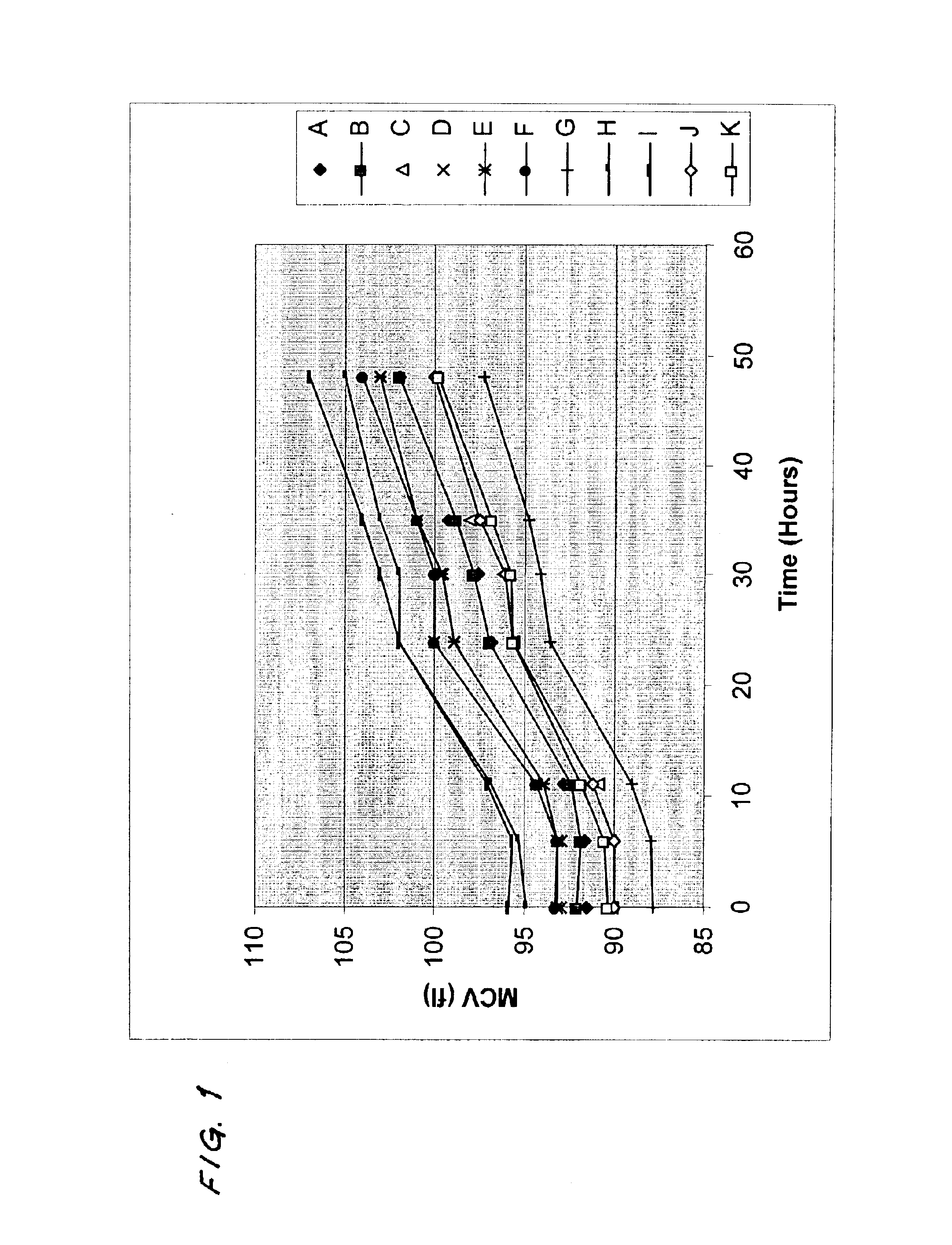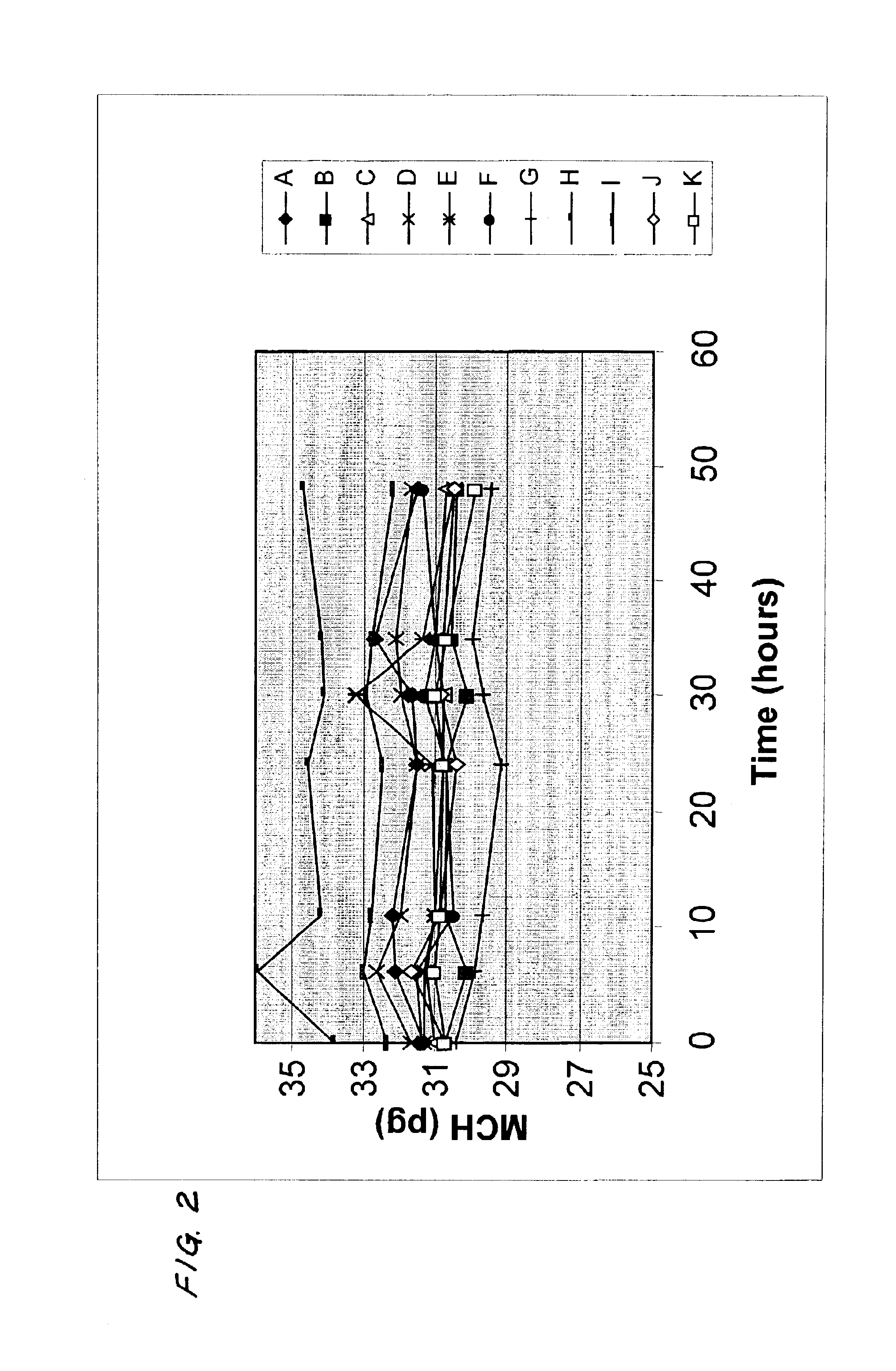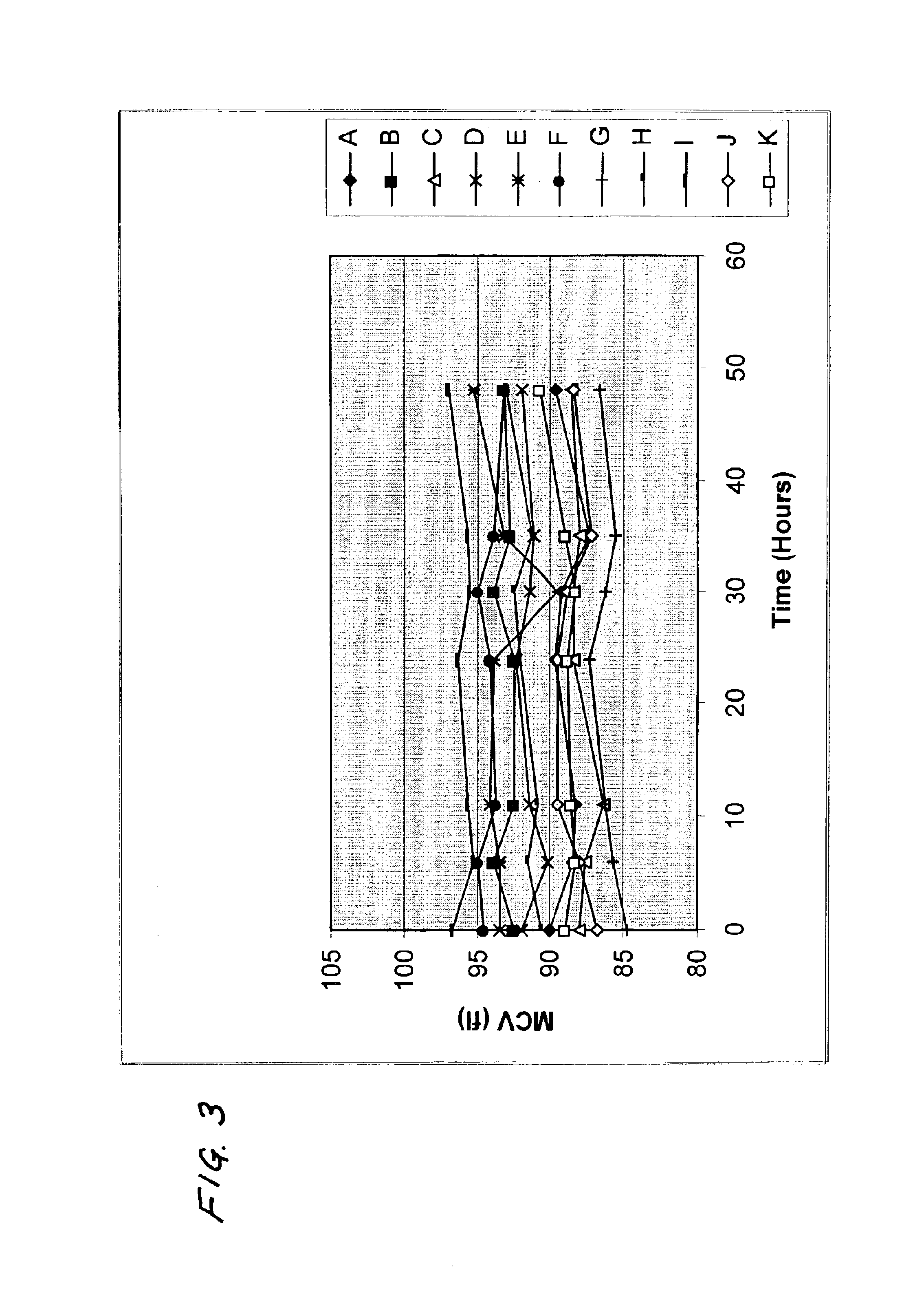Performance improvement for hematology analysis
a technology of hematology and performance improvement, applied in the field of data analysis, can solve problems such as process aged samples of blood, and inability to perform follow-up investigations,
- Summary
- Abstract
- Description
- Claims
- Application Information
AI Technical Summary
Benefits of technology
Problems solved by technology
Method used
Image
Examples
example 1
[0036]In the following example, the “CELL-DYN” 4000 hematology analyzer, commercially available from Abbott Laboratories, was used for the generation of the data. One hundred (100) samples of blood were used to establish the regression relationship between the value of MCH and the value of MCHC. Conventional least squares linear regression was used to derive the slope (constant “a”) and the y-intercept (constant “b”), which constants will vary from instrument model to instrument model. In the linear regression analysis shown in FIG. 4, the constant “a” is 0.2929 and the constant “b” is 24.514. Consequently, if the value of MCH of the sample of blood were 30 pg, the value of MCV measured were 100 fl, and the value of MCHC measured were 30 g / dl, then:
Calculated Value of MCHC=30×0.2929+24.514=33.3 g / dl
Theoretical value of MCV=(30 / 33.3)×100=90.1 fl
Theoretical value of MCV=(30×100) / (30×0.2929)+24.524=90.1 fl
In this example, a value of MCV of 100 fl would be corrected by the method of t...
examples 2-5
[0037]In these examples, the values of MCV measured after the samples were stored for 24 hours at room temperature and the initial values of MCV, as calculated by the method of this invention after the samples were stored for 24 hours at room temperature, were compared with the values of MCV measured prior to storage of the samples. Table 1 shows the results of the comparison for measurements made with four instruments commercially available from Abbott Laboratories.
[0038]
TABLE 1“CELL-“CELL-DYN”DYN”“CELL-DYN”“CELL-DYN”4000370032001200Change in value5.113.04.06.08of MCV ofsamplesobserved afterstorage at 24hours relative toinitial value ofMCV of samplesobserved (fl)Standard1.711.451.391.90deviation ofchange above (fl)Change in value0.3620.390.440.59of MCV ofsamplescalculated bymethod of thisinvention afterstorage at 24hours relative toinitial value ofMCV of samplesobserved (fl)Standard2.051.502.661.65deviation ofchange above (fl)
On a variety of “CELL-DYN” automated analyzers, the valu...
PUM
 Login to View More
Login to View More Abstract
Description
Claims
Application Information
 Login to View More
Login to View More - R&D
- Intellectual Property
- Life Sciences
- Materials
- Tech Scout
- Unparalleled Data Quality
- Higher Quality Content
- 60% Fewer Hallucinations
Browse by: Latest US Patents, China's latest patents, Technical Efficacy Thesaurus, Application Domain, Technology Topic, Popular Technical Reports.
© 2025 PatSnap. All rights reserved.Legal|Privacy policy|Modern Slavery Act Transparency Statement|Sitemap|About US| Contact US: help@patsnap.com



